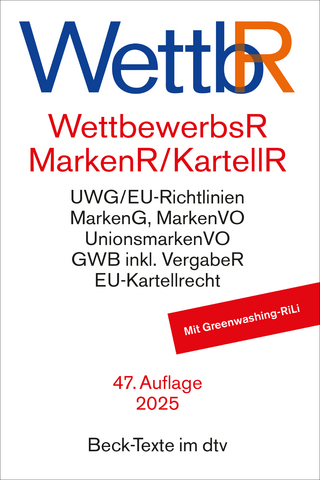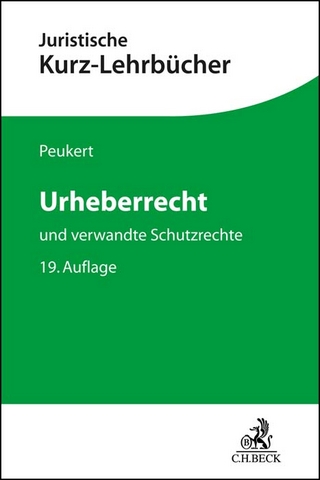
Patent Valuation
John Wiley & Sons Inc (Verlag)
978-1-118-02734-9 (ISBN)
A practical resource for valuing patents that is accessible to the complete spectrum of decision makers in the patent process In today's economy, patents tend to be the most important of the intellectual property (IP) assets. It is often the ability to create, manage, defend, and extract value from patents that can distinguish competitive success and significant wealth creation from competitive failure and economic waste. Patent Valuation enhances the utility and value of patents by providing IP managers, IP creators, attorneys, and government officials with a useable resource that allows them to use actual or implied valuations when making patent-related decisions.
Involves a combination of techniques for describing patent valuation
Includes descriptions of various topics, illustrative cases, step-by-step valuation techniques, user-friendly procedures and checklists, and examples
Serves as a useable resource that allows IP managers to use actual or implied valuations when making patent-related decisions
One of the most fundamental premises of the book is that these valuation skills can be made accessible to each of the various decision makers in the patent process. Patent Valuation involves narrative descriptions of the various topics, illustrative cases, step-by-step valuation techniques, user-friendly procedures and checklists, and an abundance of examples to demonstrate the more complex concepts.
WILLIAM J. MURPHY is a Professor of Law and Chair of the Commerce and Technology Law Graduate Program at the University of New Hampshire School of Law (formerly the Franklin Pierce Law Center), one of the top schools of intellectual property in the country. Murphy cofounded UNH Law's Intellectual Property Valuation Institute and currently serves as its director. He is the author of R&D Cooperation among Marketplace Competitors. Murphy earned a JD degree from Pennsylvania State University's Dickinson School of Law, and he holds master and doctorate degrees from Harvard Business School. JOHN L. ORCUTT is the Associate Dean for Faculty Research and a Professor of Law at the University of New Hampshire School of Law. Orcutt cofounded UNH Law's Intellectual Property Valuation Institute and its International Technology Transfer Institute. Orcutt is the author of Shaping China's Innovation Future: University Technology Transfer in Transition. Before coming to UNH Law, Orcutt worked as a Silicon Valley investment banker and a capi-tal markets attorney. Orcutt earned a JD degree from the University of California, Berkeley. PAUL C. REMUS is a shareholder of the law firm of Devine, Millimet & Branch, P.A., in Manchester, New Hampshire. Remus concentrates his intellectual property practice in prosecuting patent applications, drafting noninfringement opinions, and licensing technology. He also mediates disputes involving intellectual property and is on the U.S. District Court Mediation Panel List. Remus also represents both companies and venture capitalists in private placements and other financing involving intellectual property. Remus earned a JD degree from the University of Michigan.
Preface ix
Acknowledgments xiii
Part One Foundations for Patent Valuation and Decision Making 1
Chapter 1 Valuation Basics 3
What Is Value? 5
The Valuation Process 7
Identifying the Subject Matter of the Valuation 9
Valuation Misconceptions 12
The Three Basic Valuation Methodologies 16
Limitations on Rationality in Valuation and Decision-Making Exercises 20
References 20
Notes 21
Chapter 2 Patent Basics 23
What Is a Patent? 26
Anatomy of a Patent 32
Criteria for a Patent 33
Transferring Patent Rights 36
Nationality of a Patent 39
References 40
Notes 40
Chapter 3 Using Valuation Analysis to Improve Patent Decision Making 43
Patent Decisions 45
Maximizing, Optimizing, and Satisficing: How Much to Invest in Valuation Analysis 52
Preliminary Portfolio Valuation Audit: A Practical Valuation Technique 58
References 65
Notes 65
Chapter 4 Disassembly 67
Disassembly and Decision Trees 69
Using Disassembly to Develop Higher-Quality Data 75
Using Disassembly to Understand Data Better 84
References 86
Notes 87
Part Two Patent Valuation Techniques 89
Chapter 5 Preparing for the Valuation 91
Understanding the Bundle of Legal Rights 91
Ownership Interest in the Patent 93
Description of the Patent Rights 99
Encumbrances on the Patent Rights 100
Understanding the Patent Rights’ Neighborhood 102
Exploiting the Patent Rights 103
References 117
Notes 119
Chapter 6 Income Methods: Discounted Future Economic Benefits Analysis 121
Basic Arithmetic of the Discounted Future Economic Benefits Analysis 124
Garbage In, Garbage Out: The Challenges Lay in the Inputs, Not the Math 131
Projecting Future Net Economic Benefits 133
Developing Projections from Analytical Analyses 143
Estimating the Discount Rate 151
References 159
Notes 160
Chapter 7 Advanced Income Methods: Incorporating the Value of Future Decision Opportunities 161
Option Contracts and Their Value 164
Real Options 168
Valuing Patents Using Option-Pricing Insights 170
Using Decision Trees to Incorporate the Value of a Patent’s Future Decision Opportunities 174
References 185
Notes 186
Chapter 8 Market Methods 189
Markets and Patent Rights 191
Competitive Exchange 198
Comparable Transactions 205
Alternatives to the Core Market Methods 207
References 214
Notes 216
Chapter 9 Cost Methods 219
A Few Accounting Principles 220
Cost of Development: Questionable Valuation Tool 224
Cost of Reasonable Alternatives: Establishing a Maximum Price 227
References 230
Notes 231
Part 3 Patent Valuation in Practice 233
Chapter 10 Pricing Patent Licenses 235
Payment Structures 236
Determining the Price for a License 246
Less Formal Valuation Techniques for Setting Royalty Rates 248
References 264
Notes 265
Chapter 11 Patent Infringement Damages 269
U.S. Legal Framework for Calculating Damages in Patent Infringement Cases 271
Lost Profits 275
Reasonable Royalty 285
Additional Patent Damages Matters 297
Answering the Sue or Settle Question 299
References 306
Notes 307
Chapter 12 Unlocking the Potential Value within Patents 313
Keeping Pace with Economic Changes 316
Patents as Collateral for Secured Loans 317
Securitizing Patents 325
References 333
Notes 334
Chapter 13 Valuation in Patent-Based Tax-Planning Strategies 337
Examples of Patent-Based Tax-Reduction Strategies 339
Transfer Pricing 344
Determining Transfer Prices for Patent Rights 348
References 358
Notes 359
About the Authors 363
Index 365
| Reihe/Serie | Wiley Finance Editions |
|---|---|
| Verlagsort | New York |
| Sprache | englisch |
| Maße | 160 x 236 mm |
| Gewicht | 626 g |
| Themenwelt | Recht / Steuern ► EU / Internationales Recht |
| Recht / Steuern ► Wirtschaftsrecht ► Urheberrecht | |
| Wirtschaft ► Betriebswirtschaft / Management ► Finanzierung | |
| ISBN-10 | 1-118-02734-5 / 1118027345 |
| ISBN-13 | 978-1-118-02734-9 / 9781118027349 |
| Zustand | Neuware |
| Haben Sie eine Frage zum Produkt? |
aus dem Bereich


